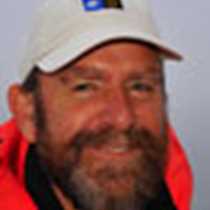Glacier Bay National Park
We woke only two frozen miles from Canada, staring at the muddy façade of the once-Grand Pacific Glacier. Thankfully, the all-American Margerie Glacier looked immaculate by comparison. The jagged fangs of its lower jaw gleamed pearly white in the fine Alaskan mist. We could feels its frosty breath on our faces. I’m ashamed to say we spent an hour waiting to see one (or hopefully all) of its teeth fall out: this is no way to treat a venerable lady. Ranks of disconsolate kittiwakes sat on drifting ice-chips: their cliff nest colonies are silent, for it has been a disastrous breeding season for them. Are retreating glaciers and failed kittiwakes connected? To our delight, several Tufted Puffins had flown in to try and cheer them up. They certainly raised our spirits: for several excited folk on board, this trip has been a Quest for a Puffin.
After admiring the grandest glacier of them all, John Hopkins, we withdrew meekly, like choirboys in a cathedral, marveling at the work of the Arch-Sculptor, Ice, which fashioned these chiseled peaks and gleaming, polished cliffs. As we retreated, the first signs of life appeared on the bare rock ramparts: the first facial fuzz of mountain avens, then the frothy green beard of alder, until finally the tall whiskers of Cottonwood sprouted along the shores, sure sign of a maturing forest. Gloomy Knob loomed; but its dour name belied avian riches: nesting puffins, scooting scoters, diving cormorants and trilling pigeon guillemots. From here we crossed to explore Geike Inlet, its mirror-calm waters broken only by silver chevrons where marbled murrelets motored. Along the shores were mergansers and harlequin ducks, out in the fjord, red-throated and common loons paddled frantically to avoid us, their flight feathers still in heavy moult.
Our last two stops were each wildlife gems. South Marble Island first, its shores writhing with growling Steller sea lions, its grassy cliffs covered in puffins, murres, kittiwakes and gulls. Eager birders ticked off both Horned and Tufted Puffins, then jumped as blowing humpbacks surfaced beside us. Last treat was Boulder Island where over 200 sea otters lolled and loafed among the kelp fronds. More than any other creature we have seen, this extraordinary animal symbolizes the recovery of Alaskan wildlife since Europeans first landed here in the 1700s. Cursed with the softest, warmest, densest pelt in the animal kingdom, it was all but exterminated in just over a century. Protected now, it has reclaimed its old haunts, floating happily in glacial waters, blissfully unaware that today it is a cherished citizen of one of America’s finest National Parks.Ian Bullock, Naturalist
We woke only two frozen miles from Canada, staring at the muddy façade of the once-Grand Pacific Glacier. Thankfully, the all-American Margerie Glacier looked immaculate by comparison. The jagged fangs of its lower jaw gleamed pearly white in the fine Alaskan mist. We could feels its frosty breath on our faces. I’m ashamed to say we spent an hour waiting to see one (or hopefully all) of its teeth fall out: this is no way to treat a venerable lady. Ranks of disconsolate kittiwakes sat on drifting ice-chips: their cliff nest colonies are silent, for it has been a disastrous breeding season for them. Are retreating glaciers and failed kittiwakes connected? To our delight, several Tufted Puffins had flown in to try and cheer them up. They certainly raised our spirits: for several excited folk on board, this trip has been a Quest for a Puffin.
After admiring the grandest glacier of them all, John Hopkins, we withdrew meekly, like choirboys in a cathedral, marveling at the work of the Arch-Sculptor, Ice, which fashioned these chiseled peaks and gleaming, polished cliffs. As we retreated, the first signs of life appeared on the bare rock ramparts: the first facial fuzz of mountain avens, then the frothy green beard of alder, until finally the tall whiskers of Cottonwood sprouted along the shores, sure sign of a maturing forest. Gloomy Knob loomed; but its dour name belied avian riches: nesting puffins, scooting scoters, diving cormorants and trilling pigeon guillemots. From here we crossed to explore Geike Inlet, its mirror-calm waters broken only by silver chevrons where marbled murrelets motored. Along the shores were mergansers and harlequin ducks, out in the fjord, red-throated and common loons paddled frantically to avoid us, their flight feathers still in heavy moult.
Our last two stops were each wildlife gems. South Marble Island first, its shores writhing with growling Steller sea lions, its grassy cliffs covered in puffins, murres, kittiwakes and gulls. Eager birders ticked off both Horned and Tufted Puffins, then jumped as blowing humpbacks surfaced beside us. Last treat was Boulder Island where over 200 sea otters lolled and loafed among the kelp fronds. More than any other creature we have seen, this extraordinary animal symbolizes the recovery of Alaskan wildlife since Europeans first landed here in the 1700s. Cursed with the softest, warmest, densest pelt in the animal kingdom, it was all but exterminated in just over a century. Protected now, it has reclaimed its old haunts, floating happily in glacial waters, blissfully unaware that today it is a cherished citizen of one of America’s finest National Parks.Ian Bullock, Naturalist




